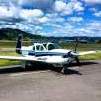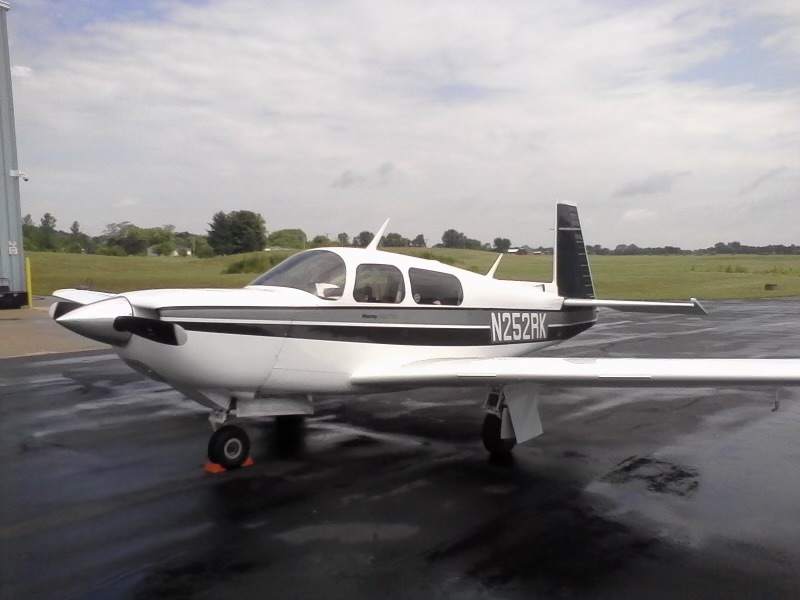-
Posts
6,109 -
Joined
-
Last visited
-
Days Won
29
Content Type
Profiles
Forums
Blogs
Gallery
Downloads
Events
Store
Everything posted by Ragsf15e
-
Look at your 3rd adi?! in my airplane, if both G5s go TU, I gotta make sure my autopilot is engaged or engage it. That’s the nice thing about an STEC rate based.
-
Well the USAF calls the “new” turbine version the T-6 Texan II. You’d think it would be very draggy if needed, but the prop is full feathering and so it actually glides really well. Luckily full flaps is very effective and so is a slip.
-
As a reference, the Air Force made us put down emergency landing patterns between 500 feet to 1000 feet. You had to land within that range from the threshold to pass that maneuver in the T-6. as @PT20J said, I would try to make myself slightly high energy on final, then use full flaps or slip to nail it exactly where I wanted. Wind analysis is very important.
-
I do practice landing within the white bars because it’s a nice reference. In my mind I pretend the beginning of it is the threshold. However, you’re definitely right, if I’m in a real situation and glide down to a 5,000’+ runway, I’m not aiming for “brick one”. 1000’ down will be a perfect outcome and 2 feet short could be a disaster (lights? Mud? Threshold?). It’s worth trying to be precise though as a 2000’ runway or field requires landing pretty close to the beginning and not short.
-

1992 M20J MSE N9127S available for sale soon
Ragsf15e replied to gevertex's topic in Aircraft Classifieds
Just as a data point, Jimmy uses Jewell. -

Garmin EIS Fuel Pressure Wild Fluctuations
Ragsf15e replied to PeytonM's topic in Engine Monitor Discussion
unfortunately I’ve got a jpi transducer and connector. I will try cleaning it, but I don’t think it’s the same or at fault for my application. -
For some of the EPs, a mid 80s J model poh is a good reference, but might not be exactly what you’re looking for. You might need to use several J poh’s and make up your own C/E/F EP section. personally, if enough altitude is available, I like to circle down from a high key when I practice. Somewhere around 2000’-2500’ over the numbers, clean, best glide (or faster). Then circle down to low key (which is your abeam position) at approx 1000’, ~100mph (best glide for me). Then you’ll just do your best commercial pilot power off 180. Gear and flaps and slip and s turn and pull the prop rpm out (this is very effective extending glide) as appropriate to not be short, but not land halfway down the runway. With practice and proper wind consideration, you can nail a 500’ target or better consistantly. some will say that having 2500’ over the numbers is unlikely, but you can practice to intercept the same circling pattern from anywhere - low key (abeam), base, final, etc.
-
Exactly. I am sometimes overly anal (or anxious?) but I’ve been known to wash my windscreen after a trip before putting on the cover if the airplane is to be left outside. I don’t want the cover rubbing in those bugs!
-
One thing to watch for, keep it as tight as possible when it’s on. Tight. It looks like good quality, but my bruces has zero wrinkles when on and doesn’t move in the wind at all. You don’t want it slowly rubbing.
-

2000 ovation comms/radio/electrical issue
Ragsf15e replied to Subternal's topic in General Mooney Talk
I might also suggest pulling the pma7000, cleaning the connections as much as possible on both the unit and rack, then re-racking it. -

Garmin EIS Fuel Pressure Wild Fluctuations
Ragsf15e replied to PeytonM's topic in Engine Monitor Discussion
If you solve it, let us know. My jpi930 fp has been fluctuating for years. -

GI-275 and magnetometer for revisionary mode
Ragsf15e replied to shawnd's topic in Modern Mooney Discussion
I might just (vfr) pull your pfd circuit breaker and see what you really have. The gi-275 is going to fall back to track vs heading which is just as good or better. You can also turn off your gps and replicate electrical failure. If the internal gps in the -275 is on you still get track. I’m not sure how another gmu improves this? -

GI-275 and magnetometer for revisionary mode
Ragsf15e replied to shawnd's topic in Modern Mooney Discussion
Additionally, a G5 has an internal gps as well. It can be set up iaw the STC with a small antenna under the glareshield (it also has an internal antenna that my hangar elves found works great). If it’s connected to the panel gps, that’s primary but it can use internal gps in a failure, so it doesn’t lose gps. Does the -275 also have internal gps? -

Yearly Cost: More or less than you expected?
Ragsf15e replied to Trogdor's topic in General Mooney Talk
This seems to match me too. I have an inexpensive hangar, but ~20k/year all in is in the hundred hours ballpark. -
What HSI are you using? If not an electronic one, then you will have to set each course. Newer digital ones come with gpss and auto slewing.
-

Instrument Approach Gear and Flap Sequence - A survey
Ragsf15e replied to midlifeflyer's topic in General Mooney Talk
Well thought out. It’s always important to train for being on the approach with weather at mins, socked in above, and close to your alternate fuel. I try to add in a crying baby or a pax with an ear block. You will feel the pressure of the real world even if it’s just knowing it will be right around mins. It will certainly feel different from approaches where you are clear above and just go through a 1000’ layer on final. It’s easy to do the 150kts yo the faf, slam on the brakes, start down, drop the gear at 500’, half flaps, roll halfway down the runway and taxi to the cafe feeling like chuck yeager, but in the real thing, you’ll want to be consistent and deliberate with whatever your chosen technique is because it will feel different and it’s easy to get behind when you’re doing something different every time. -

Instrument Approach Gear and Flap Sequence - A survey
Ragsf15e replied to midlifeflyer's topic in General Mooney Talk
Yep. I don’t think configuring at the faf is a good idea. I’ve seen people do what you describe and it works fine, but I don’t like adding things at the faf that aren’t necessary. Final configuration done and checked prior, airplane all trimmed and on speed prior. That’s how i do it. -
Lasar shows the real ones in stock now. Fit right out of the package. https://lasar.com/interior-hardware/seat-roller-140004-000
-

Pre-J Mooney Jump Start Procedure
Ragsf15e replied to Mooney-Shiner's topic in Vintage Mooneys (pre-J models)
Isn’t there a fuse on the battery minder wiring since it’s normally low current anyway? I thought my minder connection had a pretty low amp fuse but possibly im wrong? -

Instrument Approach Gear and Flap Sequence - A survey
Ragsf15e replied to midlifeflyer's topic in General Mooney Talk
Ha! Ill be first, but ill be different too… gear and approach flaps prior to the FAF. Ill use them to help reduce my speed to my fas speed, but my goal is to be trimmed, on speed, and basically just hands off into the FAF, then there’s just the 6 Ts to do as required. Pulling the power allows descent without retrimming if you were already on speed. I don’t like to add a configuration change at the GS intercept as well. Not only the configuration change, but confirming gear down, retrimming, and 6Ts at the FAF is a lot. We taught in the USAF to be configured, trimmed, etc 1-2 nm prior to the faf. In the Mooney i use closer to .5-1.5nm prior. -
Just to be clear… Stall with the ball centered, power on or power off, maybe a little roll but controllable with coordinated inputs. Probably a bit more noticeable with power on, highly recommend doing ~60%. They are worth doing, as departure stalls kill. Stall without the ball centered gets much more interesting. Especially with a high power setting. You may quickly find yourself in a very steep bank, very nose low, feels like inverted. By the time you level the wings (and hopefully pulled power), you might be well above maneuvering speed, so pull carefully. Obviously we’re not going to try to spin or anything, but seeing it stall uncoordinated once or twice with an instructor might be worthwhile to convince us that coordination is really important!
-
http://www.csgnetwork.com/tasgpscalc.html
-
Couple things… The displayed GS is precise. The displayed TAS is only as good as your CAS, temp, altimeter setting, etc. is your G5 using CAS or IAS? How good is your displayed airspeed? You must do a good 3 way groundspeed test to and enter the GS values in a computer to know for sure. I find that my IAS is about 3kts fast. Now, why are you “always into a headwind”? Well first, it’s actually true that you’ll see more hw component than tw because you always have to turn into the wind to maintain your course (not to be confused with heading). So of the 360 degrees of possible wind angles, more than half result in a headwind. Second, if your IAS is a couple knots fast (as I suspect), you’ll find that the correctly displayed GS vs incorrect TAS will show that you have a HW even if you don’t.




